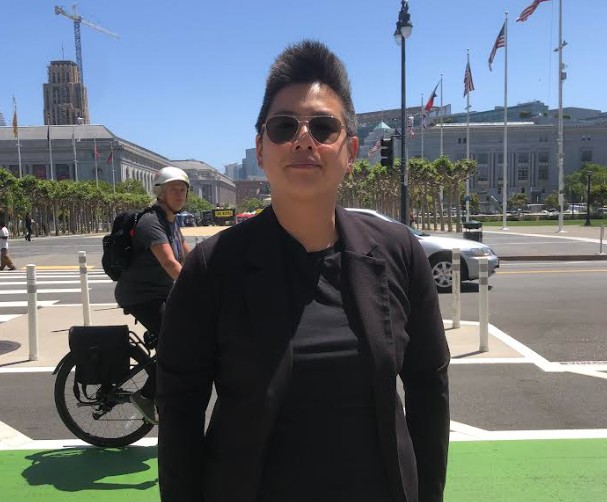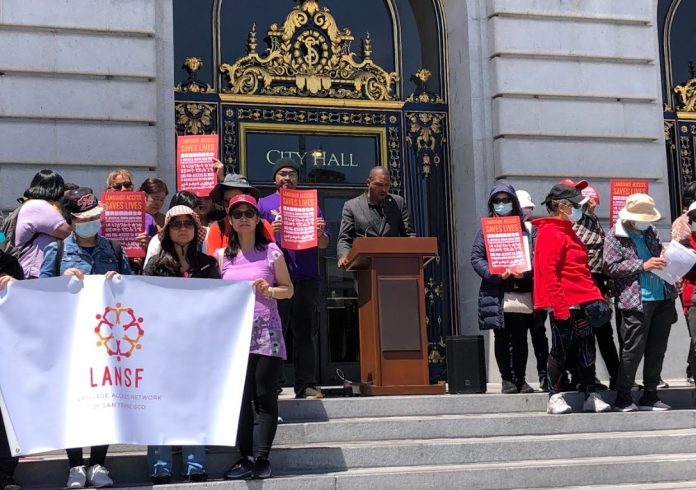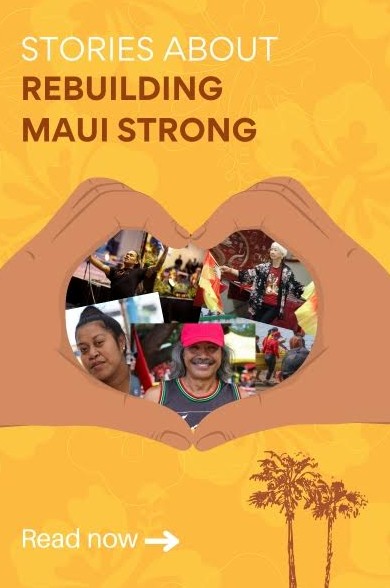By Aneela Mirchandani
San Francisco is known the world over as a sanctuary city where diversity is welcomed. But can it live up to its promise?
That was the question that brought together a number of representatives of immigrant communities at the steps of City Hall prior to a budget hearing Wednesday.
The topic of the hearing was language justice.
“When language becomes a barrier,” said Supervisor Shamann Walton, who is spearheading the effort, “people are denied not only services but also safety, opportunity, and full civic participation.”
In recent years, San Franciscans have become familiar with announcements in multiple languages, from transit signage to back pages in letters from the city government.
Most merely pass over the unfamiliar text. But for the people with limited proficiency in English, the translations can be a lifeline. Around 18% of the city’s residents are linguistically isolated, according to the 2025 report from the San Francisco Office of Civic Engagement and Immigrant Affairs (OCEIA).
While the effort to provide language access has come a long way since OCEIA was established in 2009, there are still gaps in access to the three languages designated by San Francisco: Spanish, Chinese (both Cantonese and Mandarin), and Tagalog.
Next year, as a result of the 2024 expansion of language access, Vietnamese will be added to the mix. The city will also be required to translate all signage and websites.
But these ambitious expanded goals come with a price tag. The city’s budget analyst unveiled what that amount is likely to be in a report presented at the hearing—$5.6 million. OCEIA believes the figure is likely to be higher, up to $5.8 million.

“We know it is a tight budget year, but language access is a civil right,” said Annette Wong, managing director at Chinese for Affirmative Action (CAA), in an in-person interview with AsAmNews.
CAA’s core constituency is the Chinese American community, but they have been at the forefront of advocating for other linguistically isolated groups as well. “It’s important to fully fund so that the department can meaningfully implement the ordinance, so that it is not just words on paper, but actually alive.”
Walton called the Budget and Appropriations Committee hearing to assess how the city is meeting its language access goals.
Members of the community who attended spoke emotionally about the need for San Francisco’s supervisors and Mayor Daniel Lurie to pass this increase in budget, conveying the message that language access can be a matter of life and death.
Some of the community members required interpreters at the podium, and many attendees wore translation headphones—palpable proof of the need for language access.
The stories were poignant, and in many cases, riveting: a woman named Annie told of being in a car accident with her husband, unable to glean information about his injuries due to lack of Chinese language support at the hospital. Wong related an anecdote involving a woman named Cammy, who was pressed into service as an interpreter by EMT staff when her neighbor, a monolingual Chinese speaker, had a medical emergency. The inability to understand in a moment of peril left his wife traumatized.

Representatives from several nonprofits serving immigrant communities were present at the steps of City Hall and at the hearing. They are all part of the Language Access Network (LAN), an OCEIA-funded effort that deputizes seven local groups to serve as ambassadors to their own communities, providing language access, informing them of their rights, aiding them in accessing public services, in filling out forms, and so on. The city allocates $450,000 a year for the purpose of funding LAN groups.
“We see people who are strong, resilient, but are shut out because of language,” said Mouneissa Wangara, community liaison at the African Advocacy Network.
Ramon Bonifacio, counselor at the tenant-rights focused group South of Market Community Action Network, spoke of isolated and elderly residents, often on the brink of homelessness, who face eviction due to language barriers. He provided the anecdote of a monolingual tenant who, pressured by their landlord to sign documents, would have likely signed away their rights if language help had not been available. “Housing is about more than just building,” he said.
Spanish has been a required language in San Francisco for several years. However, they still deal with gaps in access, said Silvia Ramos, social services manager at Carecen SF, which provides services to the local Central American community.

“The staff at city departments are not trained up to use [telephonic] interpretation lines,” Ramos said in an interview with AsAmNews. “Everyone’s busy, but we have to exercise that right. Interpretation lines are paid for and provided by the city. The language access ordinance has been in force for a long time, so the city is required to provide training to staff.”
CAA, a Chinatown-based advocacy group that has been in existence since 1969, organized yesterday’s pre-hearing gathering at the steps of City Hall.
They, along with the other LAN groups, were instrumental in a years-long process of providing feedback to San Francisco’s Immigrant Rights Commission. This culminated in new guidance released in June 2024, when the board of supervisors passed an amendment to the city’s Language Access Ordinance.
With this change, the city is required to translate all public-facing signage, including websites. They are also required to create a “Know Your Rights” brochure in 20 of the most used San Francisco languages.
The 2024 expanded access also lowered the threshold for the number of speakers needed for a language to be included in translation requirements. The threshold went from 10,000 to 6,000. This means that Vietnamese, which has a little over 6,000 linguistically isolated speakers in the city, will be a required language for access starting in January 2026.
The threshold definition is likely to be inadequate for some languages, particularly Arabic, said Batool, a representative from the Arab Resource and Organizing Center. Given that the census does not provide a singular category for designating Arabic speakers, she said, linguistically isolated Arabic speakers are likely undercounted. “Arab and Arabic speaking people are one of the largest growing communities in San Francisco,” she said.
San Francisco’s planned expansion of language access comes in the shadow of the Trump administration, which, since it came into office in January 2025, has staked out positions these groups consider unfriendly to immigrants. This includes the rescinding of a Clinton-era executive order that required agencies to provide language access. It also includes the threat to use the Alien Enemies Act to mass-deport undocumented immigrants.
“I know that we are in a deficit right now,” Walton said at the hearing, “but I also think that this country is in a moral deficit.”
“Community members are terrified of leaving their homes,” said Wangara, regarding the aggressive anti-immigrant steps taken by the federal government. “It has made our work more challenging.”
Anisha Hingorani, policy manager at CAA, said in an interview with AsAmNews that she feels hopeful that the city will pass the additional $5.8 million that is called for. “I think it is a modest ask,” she said in an interview with AsAmNews. “This is a commitment that the board of supervisors made last year. These are basic core protections.”
Support our June Membership Drive and receive member-only benefits. With less than five days left in our fundraising drive, we are running out of time. We are just 50% of our goal of $10,000 in new donations and monthly and annual donation pledges and 44% of our goal of gaining 25 new recurring donors by the end of the month. We need your help during these challenging times. Please help to ensure quality content in amplifying the voices of the AAPI community.
We are published by the non-profit Asian American Media Inc and supported by our readers along with the Robert Wood Johnson Foundation, AARP, Report for America/GroundTruth Project & Koo and Patricia Yuen of the Yuen Foundation.
You can make your tax-deductible donations here via credit card, debit card, Apple Pay, Google Pay, PayPal and Venmo. Stock donations and donations via DAFs are also welcomed. Contact us at info @ asamnews dot com for more info.




